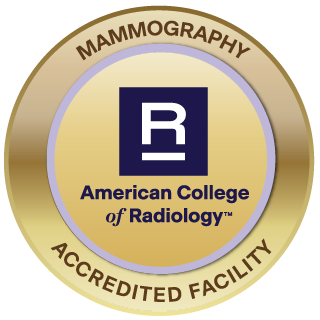
Diagnostic Imaging
Brevard County Diagnostic Imaging Services
At Parrish Healthcare, our Diagnostic Imaging Centers provide accurate,
timely and advanced images to support the highest level of patient care.
We are proud to be nationally accredited by the American College of Radiology
(ACR), a recognition that reflects our commitment to excellence in imaging
quality, safety and patient care.
Services Offered
Using state-of-the-art technology and expert interpretation, we offer a full range of imaging tests to help diagnose, monitor and guide treatment for a wide variety of medical conditions. Our imaging services include the following:
- Bone Density Testing (DEXA):This imaging measures the amount of calcium and other minerals in your bones. It’s used to diagnose osteoporosis, a condition in which bones become fragile and brittle due to lack of minerals. The test is usually done with a special x-ray machine called a dual-energy x-ray absorptiometry (DXA). The results of the test are used to calculate a score, called a T-score, which is used to determine the severity of osteoporosis.
- Computed Tomography (CT Scan): This test uses x-rays and a computer to create detailed images of the inside of your body. These images can be used to detect a variety of conditions, such as tumors, fractures and other issues. CT scans can also be used to evaluate blood vessels and organs, such as the liver and kidneys.
- Echocardiogram (Echo): Also known as a heart ultrasound or echo, an echocardiogram is a non-invasive imaging test that uses sound waves to create pictures of your heart. These pictures allow doctors to assess the heart's structure and function, including the heart valves, chambers and pumping action.
- Electrocardiogram (EKG): This test measures the electrical activity of the heart, providing a visual representation of its rhythm and rate. It is a non-invasive procedure used to detect various heart conditions including irregular heartbeats, heart attacks and heart damage.
- Interventional Radiology: Interventional radiology uses imaging guidance such as x-ray, ultrasound, computed tomography (CT) or magnetic resonance imaging (MRI) to perform minimally invasive procedures. These procedures allow diagnosis and treatment of a variety of diseases in nearly every organ system. Interventional radiologists can access hard-to-reach areas with pinpoint accuracy and minimal side effects.
- Magnetic Resonance Imaging (MRI): This imaging technique used in radiology to form pictures of the anatomy and the physiological processes of the body. MRI scanners use strong magnetic fields and radio waves to create images of the organs and tissues in the body. The MRI provides detailed images of the organs, soft tissues, and other internal structures with greater clarity than traditional x-ray imaging or CT scans.
- Mammography including Contrast Enhanced Mammography: Mammograms are an x-ray of the breast used to detect and diagnose breast diseases. It is used as a screening tool to detect early breast cancer in women who have no signs or symptoms of the disease.
- Nuclear Stress Testing: Nuclear stress testing uses a radioactive tracer and special cameras to produce images of the heart. The test evaluates the blood flow to the heart muscle at rest and during exercise or chemical stimulation. It helps to diagnose coronary artery disease, assess damage after a heart attack, and evaluate the effectiveness of treatments for certain heart conditions.
- Positron Emission Tomography (PET Scan): Positron emission tomography uses a special camera and a radioactive substance called a tracer to see organs and tissues inside the body. The tracer is injected into the body, usually intravenous via the arm and is taken up by cells in the area being studied. The camera detects the radiation given off by the tracer and produces a detailed three-dimensional picture of the area being studied. PET scans are used to diagnose and monitor many medical conditions, including cancer, heart disease and brain disorders.
- Stereotactic Breast Biopsy: This procedure is utilized to remove a sample of breast tissue to be tested for abnormalities. The biopsy is performed using a special x-ray machine to precisely locate and guide a needle into the area of suspicion. The needle is then used to remove a sample of tissue which is then examined under a microscope to look for cancer cells.
- Ultrasound: An ultrasound uses high-frequency sound waves to create an image of internal organs and systems in the body. It is also commonly used to view the developing fetus during pregnancy.
- X-Ray: X-rays are a type of radiation that can pass through the body and create an image of the inside of the body. X-rays are used to diagnose and treat many medical conditions, such as broken bones and infections.
For questions, or to schedule an appointment now, please call central scheduling at 321-268-6150!
Locations
We’re here to support your diagnostic imaging needs with three convenient locations throughout Port St. John and Titusville. Walk-ins for select services are welcome at all locations.
-
Parrish Healthcare Center in Port St. John:
- Address: 5005 Port St. John Parkway, Port St. John, FL 32927
-
Hours of Operation:
- Monday-Friday: 7AM-4PM
- Saturday: 7AM-12PM (For Select Services)
- Services Offered: Bone Density (DEXA), CT, Echocardiogram (Echo), Electrocardiogram (EKG), Mammography (Screenings and Diagnostics), MRI/MRA, Ultrasound and X-Ray
-
Parrish Medical Center:
- Address: 951 North Washington Ave., Titusville, FL
-
Hours of Operation:
- Monday-Friday: 7:30AM-4PM
- Saturday: 7AM-12PM (For Select Services)
- Services Offered: Bone Density (DEXA), CT, Echocardiogram (Echo), Electrocardiogram (EKG), IR (Interventional Radiology), Mammography including Contrast Enhanced Mammography, MRI/MRA, PET/CT and Nuclear Medicine, Ultrasound and X-Ray
